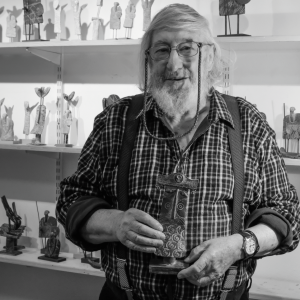Welcome to Ceramic Review
Ceramic Review is the magazine for contemporary and historical ceramics, ceramic art and pottery.
Ceramic Review Issue 334
July/August 2025
Ceramic Review is the magazine for contemporary and historical ceramics, ceramic art and pottery.
July/August 2025
John Maltby’s seaside roots and life experiences inhabit his work, illustrating the passage of his past 80 years in vessels, sculptures and abstract forms. His friend Andy Christian visits the artist at his home in Devon to discuss his work and influences
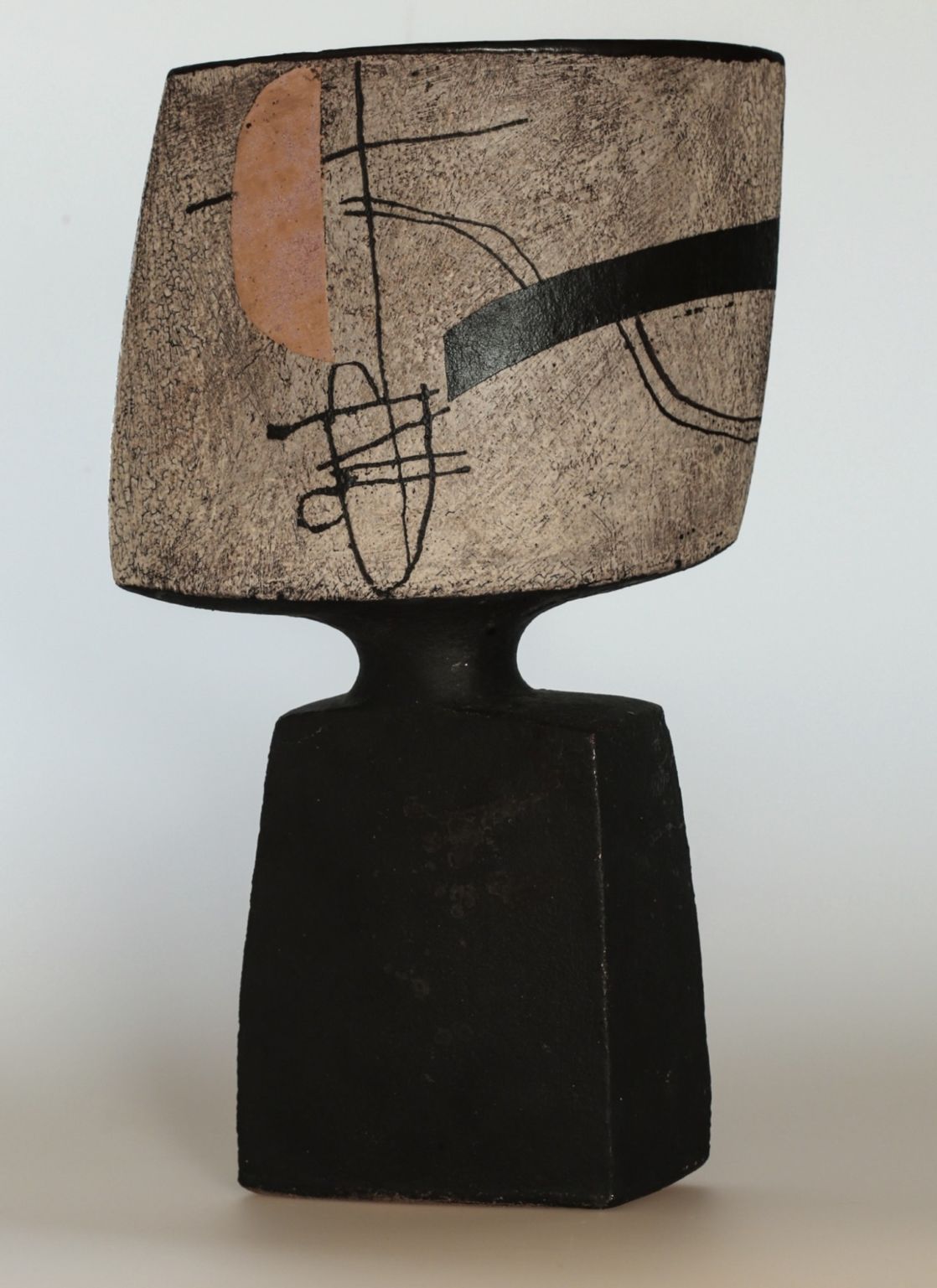
Abearded face peers at us through the glass door and cracks into a grin. We are being welcomed to the home of John Maltby in Devon, a friend and potter I have known for over 30 years. My companion, the photographer and ceramics collector Nigel Dutt, has visited him for the last 15 years. This history between the three of us makes it easy for our octogenarian friend to sit back and talk as we settle into comfortable chairs looking out into his country garden.
Maltby is a natural storyteller and he takes the bait and slips straight into an account of his early life in Cleethorpes. His father was a fish merchant who was determined his son would follow him into the fish business, setting him to work on the accounts well before he had completed school. His mathematical ability did not match his propensity for drawing and working with figures made him cry. His mother protested the enforced training and Maltby was steered towards a career in engineering drawing instead, which bored him. As a consequence, he has had an aversion to arithmetic and money all of his life, but the engineering or the piecing together of components rather, has been taken up.
EARLY INFLUENCES
His narration is filled with images of the sea, fish, boats, old fisher folk and dock workers. He tells us of his escape from the fish market, messing about in boats with his friend Dai Jones, learning about racing tides, landing secretly and scrumping for raspberries, and the on-board meals of fried eggs and cold beans straight out of a can wiped up with a bit of bread in lieu of ever washing the plates. He tells us about the salt marshes, the f lat sands and describes the sweeping horizons. He describes too the pleasure beach where he was forbidden to go with its cheap charms and good-hearted working folk on holiday determined to have a grand day out.
hese are his roots and here we uncover some of the things that inhabit his work. Later at art college he began to hitch back and forth to London for weekends of music at the newly built Royal Festival Hall. He discovered and was introduced to the work of 20th-century sculptors and painters. Gradually he began to gather a sense of his Englishness. He is not a nationalistic man but he has chased a sense of ‘Englishness’ through the composers Benjamin Britten and Peter Maxwell Davies, and the artists Ben Nicholson, Alfred Wallis, Sam Smith and many others.
His early European travels, paid for with art prize money, brought him back to Britain with a love of Mozart and European architecture. He then went on to Goldsmiths college in South London, where in the liberal educational atmosphere of the 1960s he moved between departments, studying sculpting, printmaking, textiles and pottery. There too he found encouragement to further his interest in the artists he admired by exploring the metropolitan galleries. He recalled that after Goldsmiths he did some short stints of teaching in schools and it was in the last of these posts that he met his future-wife Heather. When they first met she was preoccupied with sewing worn sheets together after taking out their torn centres and the care and precision of her hand stitching entranced him.
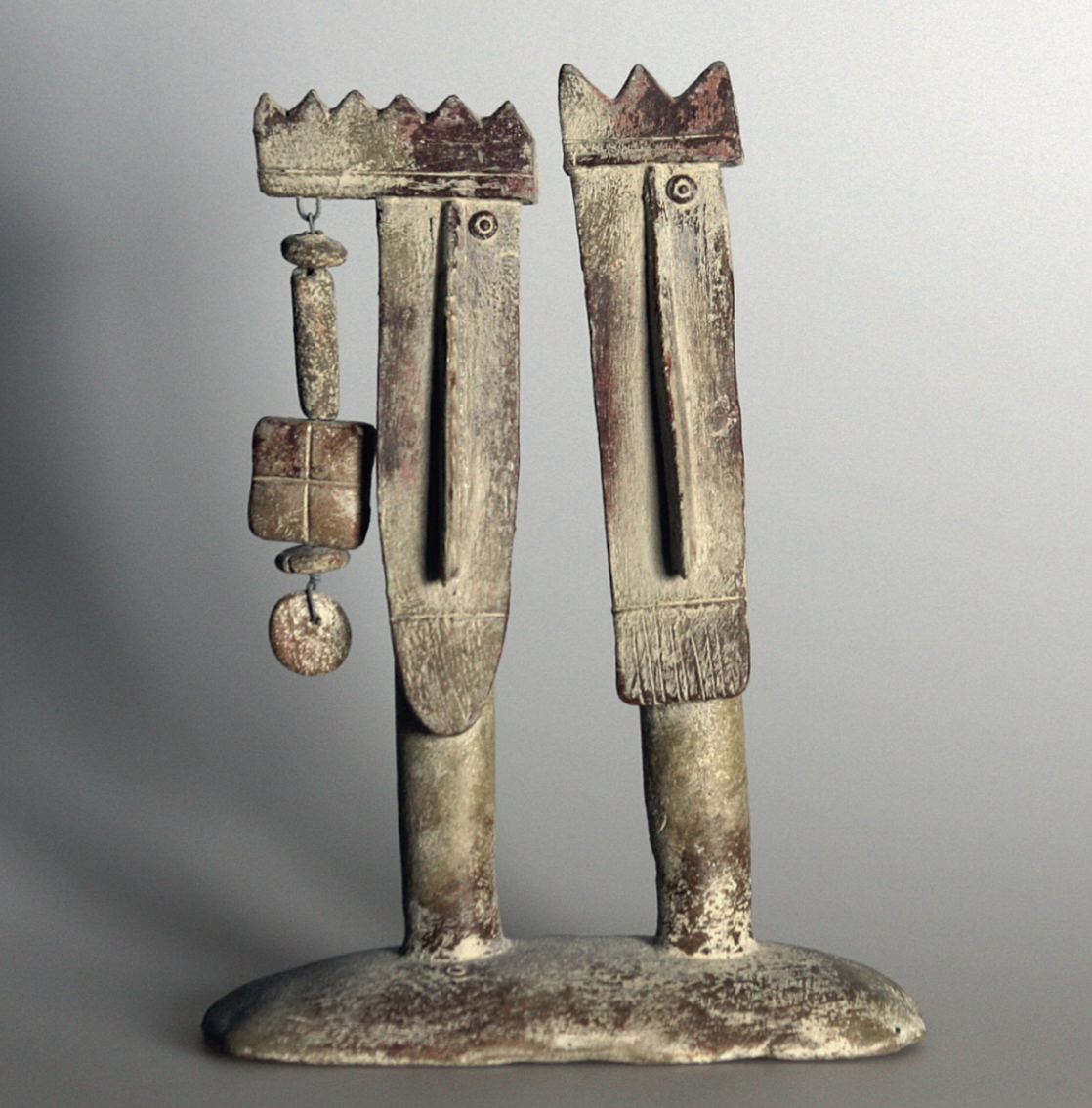
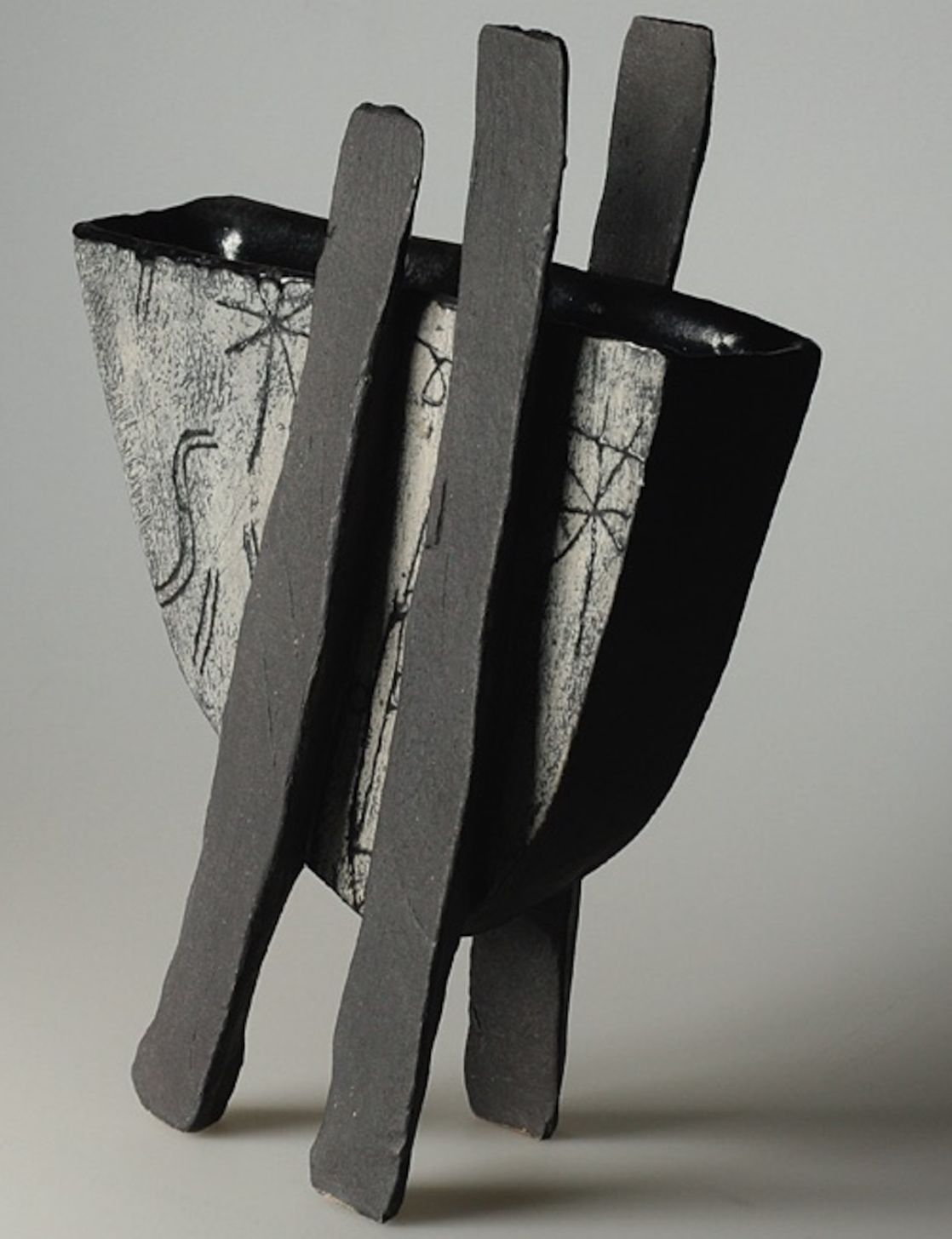
She also had a very engaging smile and twinkling eyes and that sealed it. He was hooked. They married, moved to Devon and after working for David Leach at Lowerdown Pottery in Bovey Tracey, Maltby was determined to set up his own pottery that would allow him more control and creativity.
INSPIRATIONAL ARTISTS
Back in his lounge we are surrounded by bowls of dried leaves and seed heads, by tribal textiles, sculptures, a mirror by Brian Ilsley, paintings and prints by Breon O’Casey and clay works by Peter Smith and Richard Batterham, alongside a litter of his own pots and wooden automata that have strayed onto the mantelpiece and hearth. As Maltby talks he waves his arms expansively, wagging his finger at us and speaking urgently about the work he is making now and of things past. His wife Heather died 12 years ago but she is still a presence; the love of his life. He still uses the term ‘we’ about his making and doing, witnessing her vital role throughout their lives together. It is used in a charming and effortless way and has become part of his/their story. Out of his early life and a brush with mortality when he had a heart operation in his early sixties (he blames the childhood nightly fish suppers for that) he has found his language, his signs and his symbols. He references other artists in gentle visual homage in his work and occasionally with explicit written surface texts, but nowadays this language has been absorbed, simplified and distilled into a few powerful metaphors. His mad kings, his brave warrior sailors, the tigers, owls, women looking and waiting, and the abstracted forms are taken from his lived experiences. He has left behind the earlier bright enamels he once used, preferring a monochromatic range on his more recent and smaller stoneware sculptures.
He still quotes Bernard Leach as his artist/potter hero and of others he feels kinship with, such as Richard Batterham, but he is also a great supporter of Peter Smith, who’s astonishing range of approaches to the surface of clay has been underappreciated. Maltby is not a follower of fashion in any sense.
What has become clear to me is that vestiges of his life, even the plus and minus signs from those tear-stained accounts books in his school days have, along with the everpresent sailing boats, inhabited his work for much of his making career. The ‘toy maker’ Sam Smith inspired Maltby to work in rough, painted wood and his automata were made for over 30 years in short batches as a foil to the subsequent production of clay works. In these automata he allowed his humour to brim over and they have a lighter tone.
THE ARTIST POTTER
For Maltby however, pottery has always been the more serious business. When they first moved to Devon and set the pottery up, he and Heather produced some domestic pots. He also extended his range into mirrors, chess sets, clocks and the like, but his drift has always been towards serious sculpture. Many of the ‘pots’ he has made over the last 30 years have been vessels, but there is less consideration of them as containers and rather more as objects to stand alone. They firmly grasp Bernard Leach’s demand for ‘the artist potter’. The sea has followed him and he has followed the sea. The lighthouse keepers, seafarers, warriors and kings, the slightly threatening heavily beaked sentinel birds and even the tigers and owls are all aspects of his own persona. Sometimes these people, animals and symbols have become abstracted, pared down and reduced to curving lines, arcing moons and scraps of fishing nets with dipping horizons. These are the closest his work comes to the abstract and to his heroes – the artists Paul Klee, Barbara Hepworth and Henry Moore can be found in echoes within his forms. Some of his ‘creatures’ are land-bound but just as many inhabit the sea and it is as if through these voyagers he is describing the passages of his own life. They are led by the moon, the sun and stars on the surfaces of his work and the fish are still with him, some free and some hooked.
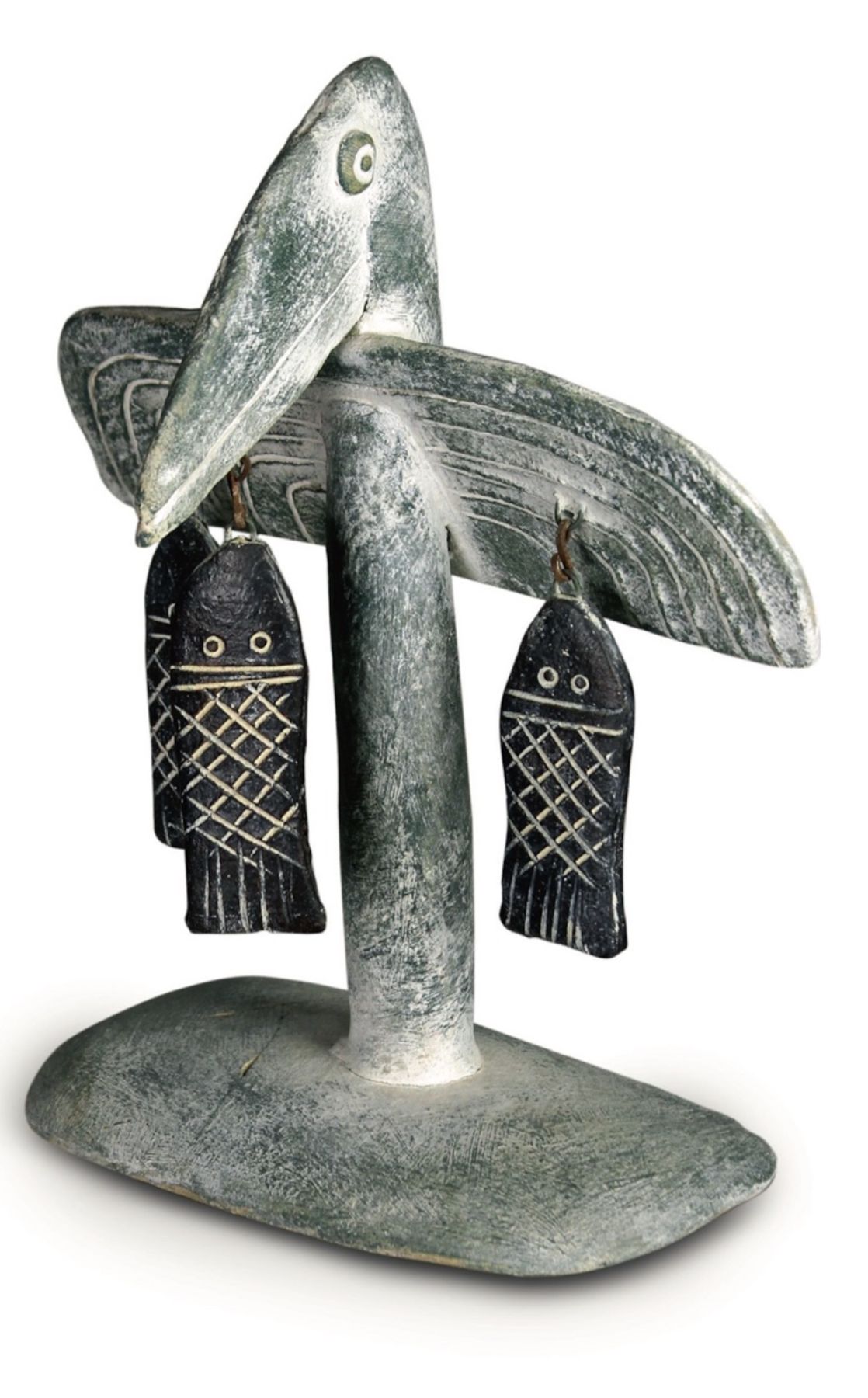
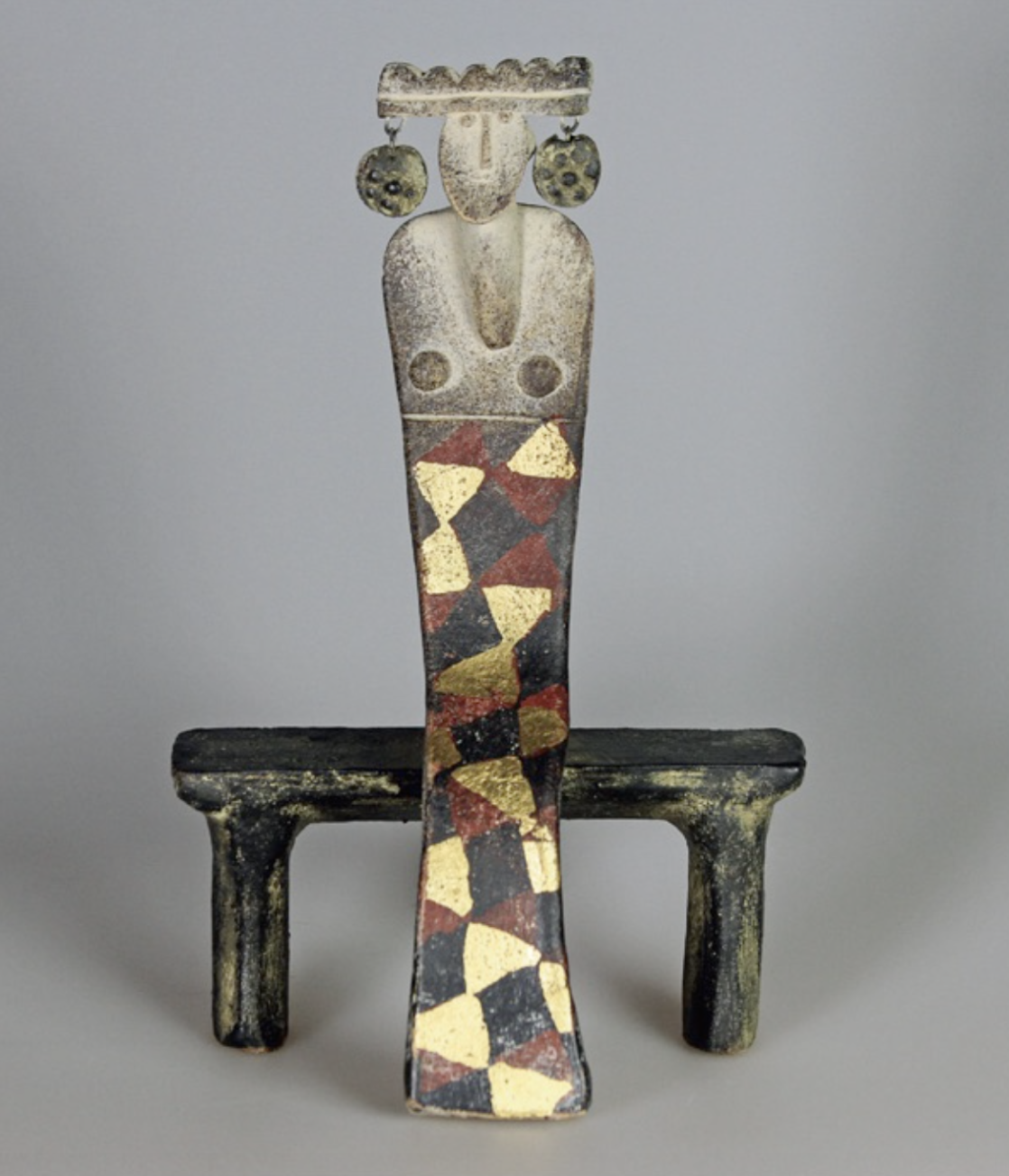
When he docks he finds exotic and wise creatures and occasionally a reclining woman clasping a bunch of flowers in an orchard. Though he declares he has never been a great reader, he gathers fragments of poetic texts and his storytelling has both rhythm and pace. He well knows that art does not have to be wholly understood but is best left in metaphor and paradox. In his rejection of the commercial career that was being set out for him and his early hunger for the arts, he discovered this range. Within it he has come back again and again to explore more deeply, to hear more and most of all to feel more deeply. His work is assured because it is heartfelt.
VISUAL MEMORIES
Maltby takes us around the house and into the pottery with its crowded workbench and rooms filled with catholic collections of objects curiously curated in fond muddles. Surfaces hold stones, shells and fossils alongside stray pots and sculptures, strings of beads and pieces of hand-printed cloth. The walls hold a scattering of drawings by Bryan Pearce, Max Wildman’s versions of Alfred Wallis’ works, Brian Ilsley’s minimal paintings and a noticeboard deeply littered with generations of favoured postcards and treasured ephemera. A dried loaf of French bread unusually shaped like a leaf hangs beside a tribal mask in the hallway in humorous juxtaposition. A showroom serves to house his recently completed and partially completed recent work.
The house is based around hubs of activity and places of repose where Maltby and his visitors are given frequent visual nudges. It’s impossible not to be inspired in this house if your eyes are hungry and your mind is alert. Thus, in his eighties Maltby works on. His mobility is more limited but his mind is bright. He is undauntedly curious, he cherishes news of small scandals in the art world, he exercises his right to roaming indignation and his hands find new ways to feel and draw out aspects of his life story. The wonder is that like so many good artists, he finds ways to elucidate that which we might have been struggling to understand or speak of a little more clearly. There are archetypes in his work that are shared with many other people and which are deeply rooted in our culture and within our unconscious selves.
As we leave after a simple lunch in the local pub he determines to sit quietly again for a time and then the workbench will beckon and his hands will work the clay, rub slip into the pre-scratched surfaces and another ‘being’ will peer out into our world. As they emerge these might speak for him and simply say, ‘This is my world and it behaves this way.’ That is his truth; direct, unpretentious and clear.
This article is taken from Issue 300 of Ceramic Review. Find out more below.
